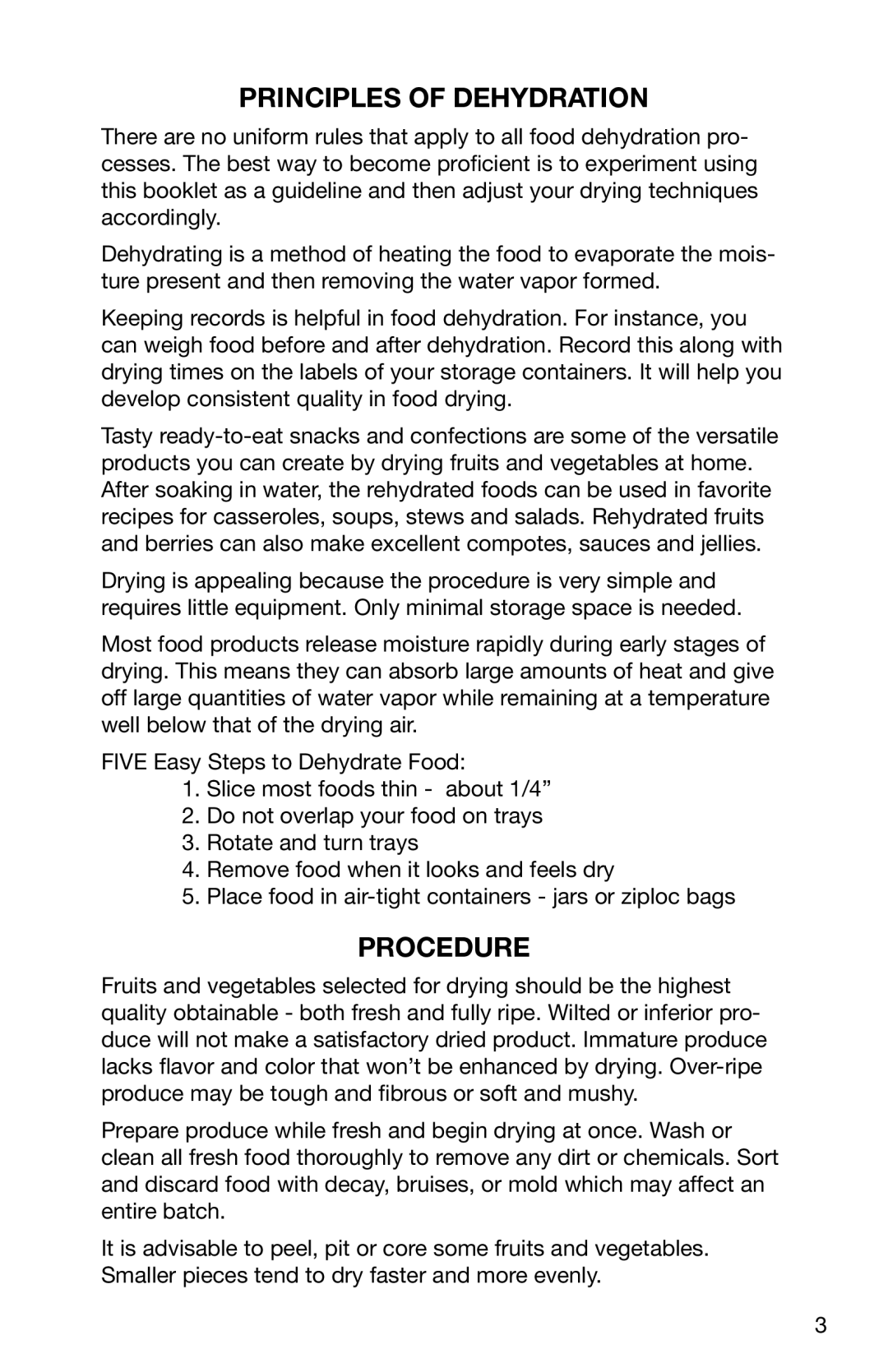Principles of Dehydration
There are no uniform rules that apply to all food dehydration pro- cesses. The best way to become proficient is to experiment using this booklet as a guideline and then adjust your drying techniques accordingly.
Dehydrating is a method of heating the food to evaporate the mois- ture present and then removing the water vapor formed.
Keeping records is helpful in food dehydration. For instance, you can weigh food before and after dehydration. Record this along with drying times on the labels of your storage containers. It will help you develop consistent quality in food drying.
Tasty
Drying is appealing because the procedure is very simple and requires little equipment. Only minimal storage space is needed.
Most food products release moisture rapidly during early stages of drying. This means they can absorb large amounts of heat and give off large quantities of water vapor while remaining at a temperature well below that of the drying air.
FIVE Easy Steps to Dehydrate Food:
1.Slice most foods thin - about 1/4”
2.Do not overlap your food on trays
3.Rotate and turn trays
4.Remove food when it looks and feels dry
5.Place food in
Procedure
Fruits and vegetables selected for drying should be the highest quality obtainable - both fresh and fully ripe. Wilted or inferior pro- duce will not make a satisfactory dried product. Immature produce lacks flavor and color that won’t be enhanced by drying.
Prepare produce while fresh and begin drying at once. Wash or clean all fresh food thoroughly to remove any dirt or chemicals. Sort and discard food with decay, bruises, or mold which may affect an entire batch.
It is advisable to peel, pit or core some fruits and vegetables. Smaller pieces tend to dry faster and more evenly.
3
